Related Research Articles
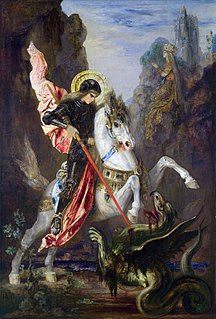
Christian mythology is the body of myths associated with Christianity. The term encompasses a broad variety of legends and stories, especially those considered sacred narratives. Mythological themes and elements occur throughout Christian literature, including recurring myths such as ascending to a mountain, the axis mundi, myths of combat, descent into the Underworld, accounts of a dying-and-rising god, flood stories, stories about the founding of a tribe or city, and myths about great heroes of the past, paradises, and self-sacrifice.

Hel is a female being in Norse mythology who is said to preside over an underworld realm of the same name, where she receives a portion of the dead. Hel is attested in the Poetic Edda, compiled in the 13th century from earlier traditional sources, and the Prose Edda, written in the 13th century. In addition, she is mentioned in poems recorded in Heimskringla and Egils saga that date from the 9th and 10th centuries, respectively. An episode in the Latin work Gesta Danorum, written in the 12th century by Saxo Grammaticus, is generally considered to refer to Hel, and Hel may appear on various Migration Period bracteates.

Adonis was the mortal lover of the goddess Aphrodite in Greek mythology. In Ovid's first-century AD telling of the myth, he was conceived after Aphrodite cursed his mother Myrrha to lust after her own father, King Cinyras of Cyprus. Myrrha had sex with her father in complete darkness for nine nights, but he discovered her identity and chased her with a sword. The gods transformed her into a myrrh tree and, in the form of a tree, she gave birth to Adonis. Aphrodite found the infant and gave him to be raised by Persephone, the queen of the Underworld. Adonis grew into an astonishingly handsome young man, causing Aphrodite and Persephone to feud over him, with Zeus eventually decreeing that Adonis would spend one third of the year in the Underworld with Persephone, one third of the year with Aphrodite, and the final third of the year with whomever he chose. Adonis chose to spend his final third of the year with Aphrodite.
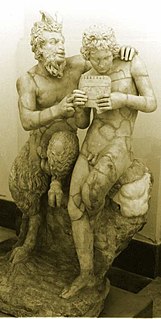
In ancient Greek religion and mythology, Pan is the god of the wild, shepherds and flocks, nature of mountain wilds, rustic music and impromptus, and companion of the nymphs. He has the hindquarters, legs, and horns of a goat, in the same manner as a faun or satyr. With his homeland in rustic Arcadia, he is also recognized as the god of fields, groves, wooded glens and often affiliated with sex; because of this, Pan is connected to fertility and the season of spring. The word panic ultimately derives from the god's name.
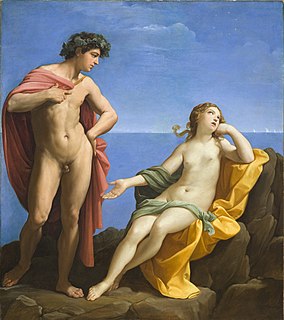
Ariadne was a Cretan princess in Greek mythology. She was mostly associated with mazes and labyrinths because of her involvement in the myths of the Minotaur and Theseus. She is best known for having helped Theseus escape the Minotaur but being abandoned by him on the island of Naxos; subsequently, she became the wife of Dionysus.
The Tumbuka are an ethnic group living in Malawi, Zambia, and Tanzania. In Tumbuka mythology, Chiuta is the Supreme Creator and is symbolised in the sky by the rainbow.

A demigod or demigoddess is a part-human and part-divine offspring of a deity and a human, or a human or non-human creature that is accorded divine status after death, or someone who has attained the "divine spark". An immortal demigod (-dess) often has tutelary status and a religious cult following, while a mortal demigod (-dess) is one who has fallen or died, but is popular as a legendary hero in various polytheistic religions. Figuratively, it is used to describe a person whose talents or abilities are so superlative that they appear to approach being divine.
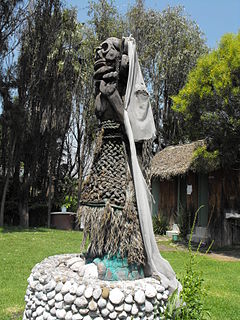
In Latin American folklore, La Llorona is a ghost who roams waterfront areas mourning her children whom she drowned.
A half-elf, known today mainly through J. R. R. Tolkien's Middle-earth writings but with origins in Norse mythology, is the offspring, possibly very beautiful and with magical powers, of an elf and a human. In Middle-earth, half-elves are the children of Elves and Men, and can choose either Elvish immortality or the mortal life of Men. The elf-maidens Lúthien and Arwen both chose mortality.

Sól or Sunna is the Sun personified in Germanic mythology. One of the two Old High German Merseburg Incantations, written in the 9th or 10th century CE, attests that Sunna is the sister of Sinthgunt. In Norse mythology, Sól is attested in the Poetic Edda, compiled in the 13th century from earlier traditional sources, and the Prose Edda, written in the 13th century by Snorri Sturluson.

Ninigi-no-Mikoto is a deity in Japanese mythology. Grandson of the sun goddess Amaterasu, Ninigi is the great-grandfather of Japan’s first emperor, Emperor Jimmu. His descent from Heaven brought rice and order to earth. The three sacred treasures brought with Ninigi from Heaven and divine ancestry established the Japanese Imperial Family.
Zanahary is the personified sky of Malagasy mythology and folklore. He is considered a creator god, having collaborated with the earth god Ratovantany to create humanity; upon death, the soul migrates to the firmament, while the body returns to the earth. For this reason, Zanahary is closely associated with the soul in the indigenous theology as well as ancestor worship. He is a national god of the Merina people, and frequently henceforth appealed to by Malagasy nationalist groups; most notably Ranavalona I promoted the worship of this god over Christianity.
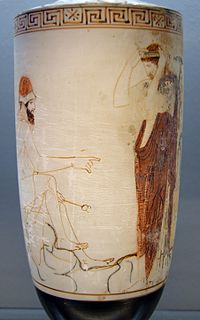
In mythology, the Greek underworld is an otherworld where souls go after death. The original Greek idea of afterlife is that, at the moment of death, the soul is separated from the corpse, taking on the shape of the former person, and is transported to the entrance of the underworld. Good people and bad people would then separate. The underworld itself—sometimes known as Hades, after its patron god—is described as being either at the outer bounds of the ocean or beneath the depths or ends of the earth. It is considered the dark counterpart to the brightness of Mount Olympus with the kingdom of the dead corresponding to the kingdom of the gods. The Underworld is a realm invisible to the living, made solely for the dead.
The main function of Lozi mythology is to show that the original Lozi people were dwellers on the Barotse Floodplain of the upper Zambezi River and that they are, therefore, entitled to claim unchallenged title to that homeland. Secondly, Lozi mythology gives legitimacy to the Lozi kingdom's foundations, by linking the monarchy and the people to a creator god, whom the Lozi call Nyambe.
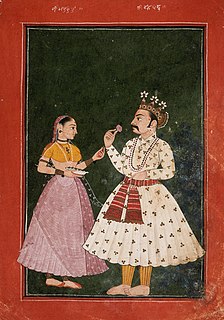
Kunti, also known as Pritha, is one of the female protagonists of the epic, Mahabharata. She is best known as the mother of the Pandavas, the main protagonists of the epic, and the warrior Karna. She is also mentioned in the Bhagavata Purana because of her connection with Krishna, the main figure of the text. She is described to be beautiful, intelligent and shrewd.
Adroanzi ('Adro-children') are a group of nature and guardian spirits in Lugbara mythology.
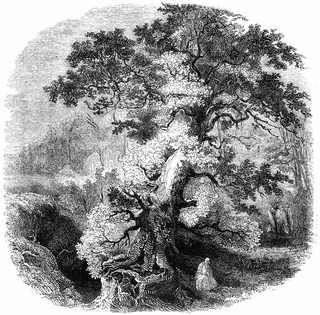
Many types of trees found in the Celtic nations are considered to be sacred, whether as symbols, or due to medicinal properties, or because they are seen as the abode of particular nature spirits. Historically and in folklore, the respect given to trees varies in different parts of the Celtic world. On the Isle of Man, the phrase 'fairy tree' often refers to the elder tree. The medieval Welsh poem Cad Goddeu is believed to contain Celtic tree lore, possibly relating to the crann ogham, the branch of the ogham alphabet where tree names are used as mnemonic devices.
Myth is a folklore genre consisting of narratives that play a fundamental role in a society, such as foundational tales or origin myths. The main characters in myths are usually non-humans, such as gods, demigods, and other supernatural figures. However, others also include humans, animals, or combinations in their classificiation of myth. Stories of everyday human beings, although often of leaders of some type, are usually contained in legends, as opposed to myths. Myths are sometimes distinguished from legends in that myths deal with gods, usually have no historical basis, and are set in a world of the remote past, very different from that of the present.
Andriamahilala is the first woman in Malagasy mythology. She is associated with the moon.
Ratovantany, also known as Andriantompo, is a self-creating Malagasy deity associated with the earth. He is most prominently featured in the Malagasy creation myths, where he makes a deal with the sky god Zanahary to create humanity; having crafted human beings from soil, Ratovantany reclaims the corpse upon death and decomposes it, while the soul belongs to Zanahary and thus the sky or the sun. Unlike Zanahary, Ratovantany appears to not have been a prominent deity to any Malagasy peoples, though this creation myth is ubiquitous in Malagasy cultures.
References
- ↑ "Andriambahomanana - Oxford Reference". Oxford Reference . Oxford University Press. Archived from the original on 2020-05-20. Retrieved 2020-05-20.
- ↑ J. A. Coleman (2007). The Dictionary of Mythology: An A-Z of Themes, Legends and Heroes. Arcturus. p. 67. ISBN 978-0-572-03222-7.